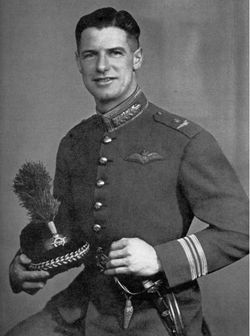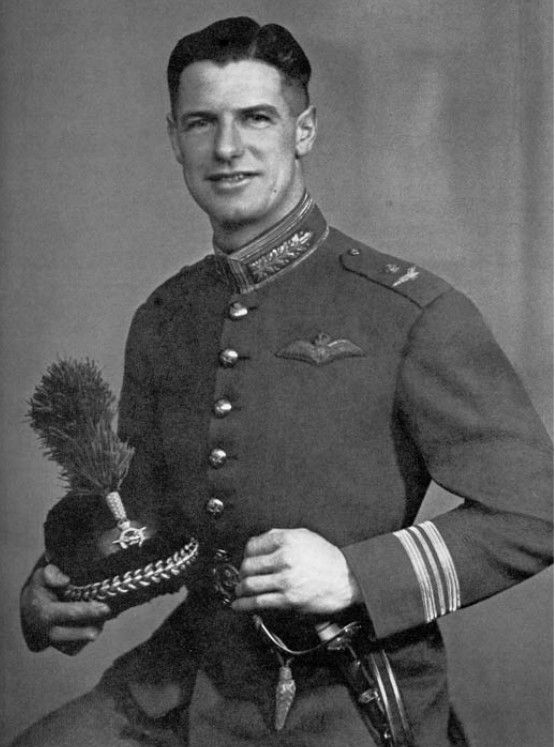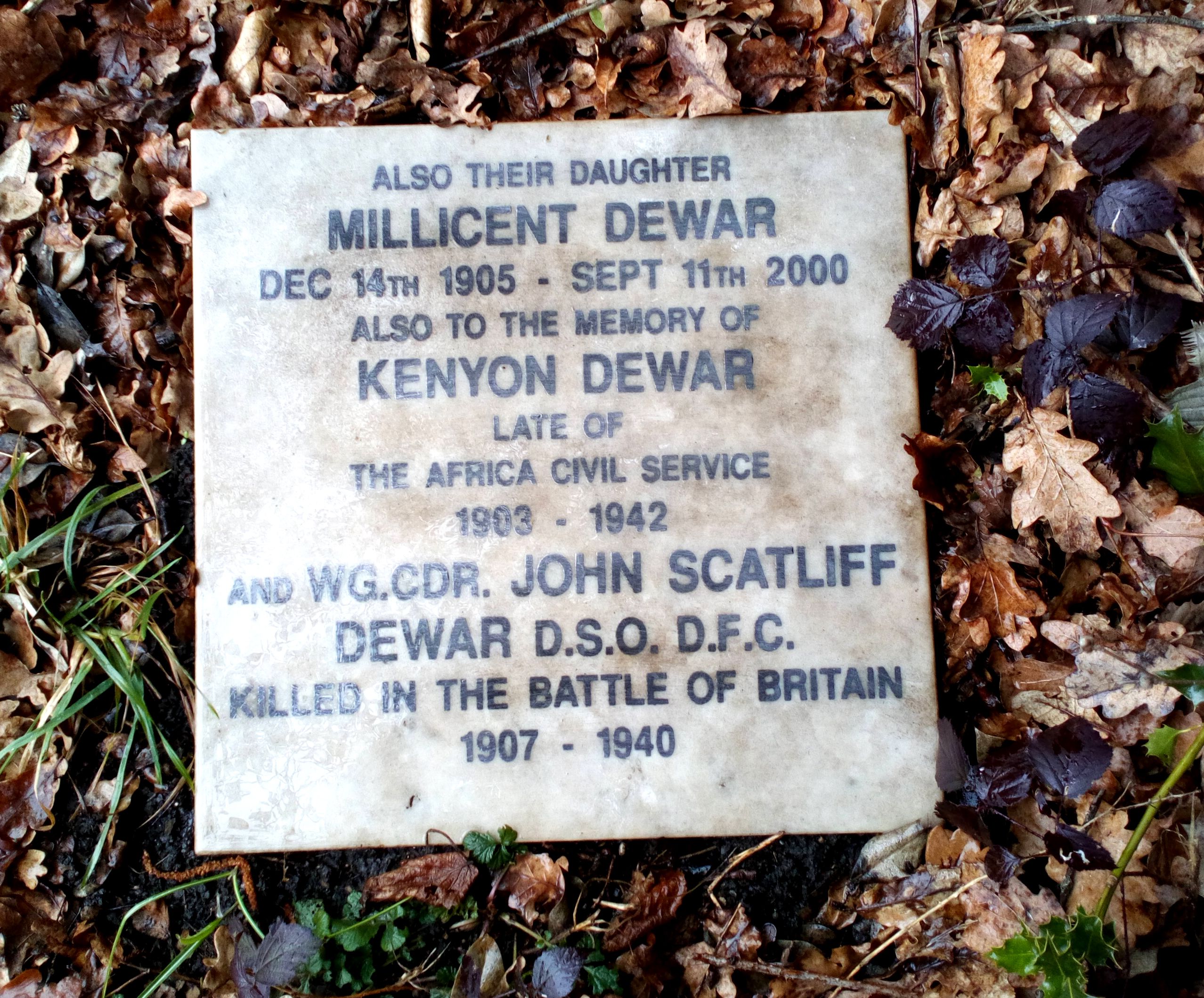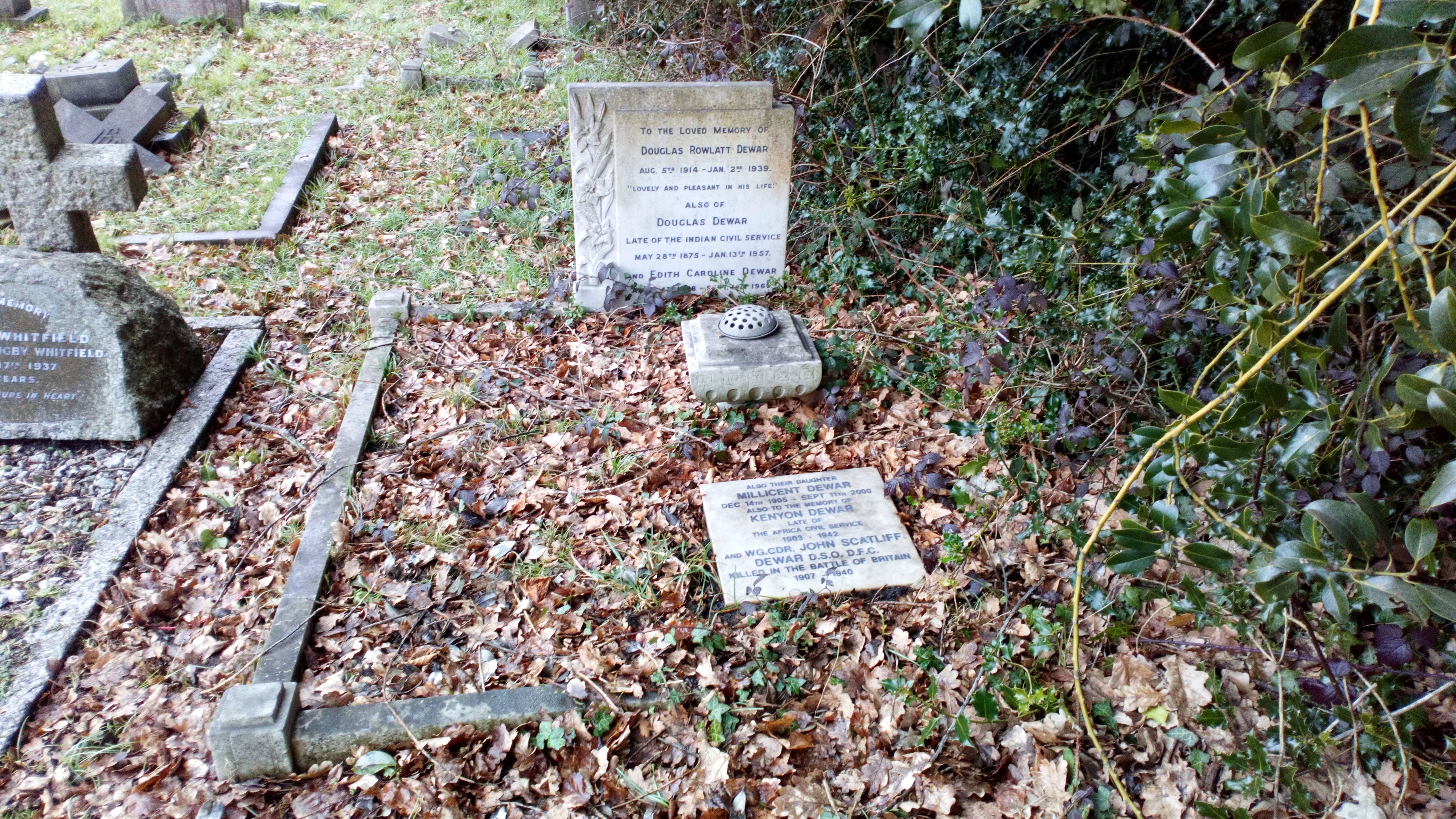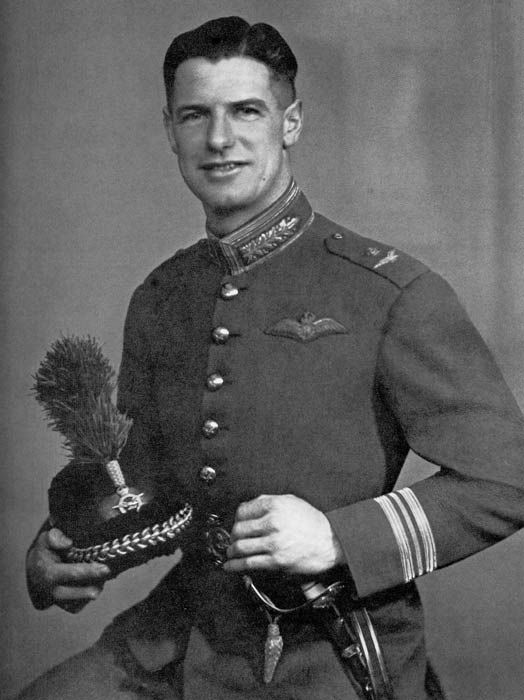John was named after his grandfather, John M.E. Scatliff.
He was educated at The King's School, Canterbury where he was a School Monitor and played in the Cricket XI and the Rugby XV. Dewar was a member of the school Officer Training Corps, attaining the rank of Sergeant.
He was also Editor of the school magazine, The Cantuarian.
Dewar attended the Royal Air Force College Cranwell from 1926 and 1927 and on graduation was commissioned as a Pilot Officer. His first posting was to No. 13 Army Co-operation Squadron at Andover. Dewar was promoted to Flying Officer on 17 June 1929. He became a Qualified Flying Instructor at the School of Naval Cooperation.
In 1933 he was posted to No. 822 Fleet Spotter/Reconnaissance (an attached RAF flight that later became part of the Fleet Air Arm) and joined HMS Furious. He served as part of the Home Fleet and in the Mediterranean.
On one occasion he was washed overboard in the Bay of Biscay but was rescued.
He was promoted to the rank of Flight Lieutenant on 1 February 1934 while at sea in the Caribbean. In 1934 he was transferred to No. 801 Fleet Fighter Squadron.
On 10 July 1937 he married Kathleen "Kay" Bowyer, daughter of Southampton politician P.V. Bowyer.
From 1936 to 1938 Dewar served in the Armament Testing Section at the Aeroplane and Armament Experimental Establishment (A&AEE) at RAF Martlesham Heath, and participated in the early development of both the Hurricane and Spitfire prototypes. He was promoted to Squadron Leader on 1 February 1938 and posted to Thorney Island as Senior Operations Officer.
On 10 November 1939 he was posted to RAF's No. 11 Group pilot pool for reassignment to a fighter squadron. He was by that time one of the most senior active duty pilots in the RAF.
Dewar was given command of No. 87 Squadron RAF on 29 November 1939 and led the Squadron during operations during the Battle of France, distinguishing himself by his superb piloting and leadership skills. On 7 May 1940, returning from a sortie in bad weather and low on fuel, Dewar had to force land his Hurricane at an unserviceable airfield at Villefranche. As he touched down his wheels dug into the mud and the aircraft overturned, severely injuring his right shoulder.
In spite of his injury, he refused to ground himself and continued to fly. He claimed a Dornier Do 17 shared and two Junker Ju 87s of I./StG 2 on 11 May, and another JU 87 the next day. For this and his leadership of 87 Squadron he was awarded the Distinguished Service Order (DSO). On 20 May 1940, in the face of the advancing German Army, Dewar ordered his squadron to return to England .
He was awarded the Distinguished Flying Cross .
He continued to fly operationally from RAF Exeter with No. 87 Squadron during the Battle of Britain, claiming two Bf 110 fighters on 11 July, a share in a Ju 88 on 13 August, and a Ju88 destroyed on 25 August.
On 1 September 1940 he was promoted to the rank of Wing Commander and became the Officer Commanding RAF Exeter.
On 12 September 1940 Dewar took off on a routine flight from RAF Exeter for RAF Tangmere in Hurricane V7306 to visit either conference or even his wife, but he failed to arrive. He was registered under 213 Squadron. Dewar was the highest RAF ranking officer to be lost during the battle.
87 Squadron ORB stated on 12 September: "Wing Commander Dewar set out from Exeter for a visit to Tangmere and was not heard of again. He had been informed of enemy activity on the route over which he was to pass, and no doubt must have run into more trouble than he could cope with by himself. A very sad loss to 87 Squadron."
His body was washed ashore on 30 September 1940 at Kingston Gorse in Sussex.
John Scatliff Dewar is buried at St John the Baptist church in North Baddesley, Hampshire.
In St Peter's Churchyard you will find a Memorial plaque for him on the Dewar family grave.
He and his wife Kay had no children.
Kay died on 16 September 2001 at Blatchington Court, Seaford.
John was named after his grandfather, John M.E. Scatliff.
He was educated at The King's School, Canterbury where he was a School Monitor and played in the Cricket XI and the Rugby XV. Dewar was a member of the school Officer Training Corps, attaining the rank of Sergeant.
He was also Editor of the school magazine, The Cantuarian.
Dewar attended the Royal Air Force College Cranwell from 1926 and 1927 and on graduation was commissioned as a Pilot Officer. His first posting was to No. 13 Army Co-operation Squadron at Andover. Dewar was promoted to Flying Officer on 17 June 1929. He became a Qualified Flying Instructor at the School of Naval Cooperation.
In 1933 he was posted to No. 822 Fleet Spotter/Reconnaissance (an attached RAF flight that later became part of the Fleet Air Arm) and joined HMS Furious. He served as part of the Home Fleet and in the Mediterranean.
On one occasion he was washed overboard in the Bay of Biscay but was rescued.
He was promoted to the rank of Flight Lieutenant on 1 February 1934 while at sea in the Caribbean. In 1934 he was transferred to No. 801 Fleet Fighter Squadron.
On 10 July 1937 he married Kathleen "Kay" Bowyer, daughter of Southampton politician P.V. Bowyer.
From 1936 to 1938 Dewar served in the Armament Testing Section at the Aeroplane and Armament Experimental Establishment (A&AEE) at RAF Martlesham Heath, and participated in the early development of both the Hurricane and Spitfire prototypes. He was promoted to Squadron Leader on 1 February 1938 and posted to Thorney Island as Senior Operations Officer.
On 10 November 1939 he was posted to RAF's No. 11 Group pilot pool for reassignment to a fighter squadron. He was by that time one of the most senior active duty pilots in the RAF.
Dewar was given command of No. 87 Squadron RAF on 29 November 1939 and led the Squadron during operations during the Battle of France, distinguishing himself by his superb piloting and leadership skills. On 7 May 1940, returning from a sortie in bad weather and low on fuel, Dewar had to force land his Hurricane at an unserviceable airfield at Villefranche. As he touched down his wheels dug into the mud and the aircraft overturned, severely injuring his right shoulder.
In spite of his injury, he refused to ground himself and continued to fly. He claimed a Dornier Do 17 shared and two Junker Ju 87s of I./StG 2 on 11 May, and another JU 87 the next day. For this and his leadership of 87 Squadron he was awarded the Distinguished Service Order (DSO). On 20 May 1940, in the face of the advancing German Army, Dewar ordered his squadron to return to England .
He was awarded the Distinguished Flying Cross .
He continued to fly operationally from RAF Exeter with No. 87 Squadron during the Battle of Britain, claiming two Bf 110 fighters on 11 July, a share in a Ju 88 on 13 August, and a Ju88 destroyed on 25 August.
On 1 September 1940 he was promoted to the rank of Wing Commander and became the Officer Commanding RAF Exeter.
On 12 September 1940 Dewar took off on a routine flight from RAF Exeter for RAF Tangmere in Hurricane V7306 to visit either conference or even his wife, but he failed to arrive. He was registered under 213 Squadron. Dewar was the highest RAF ranking officer to be lost during the battle.
87 Squadron ORB stated on 12 September: "Wing Commander Dewar set out from Exeter for a visit to Tangmere and was not heard of again. He had been informed of enemy activity on the route over which he was to pass, and no doubt must have run into more trouble than he could cope with by himself. A very sad loss to 87 Squadron."
His body was washed ashore on 30 September 1940 at Kingston Gorse in Sussex.
John Scatliff Dewar is buried at St John the Baptist church in North Baddesley, Hampshire.
In St Peter's Churchyard you will find a Memorial plaque for him on the Dewar family grave.
He and his wife Kay had no children.
Kay died on 16 September 2001 at Blatchington Court, Seaford.
Gravesite Details
Clear clean condition. Section XVI E7.
Sponsored by Ancestry
Advertisement
Explore more
Sponsored by Ancestry
Advertisement
